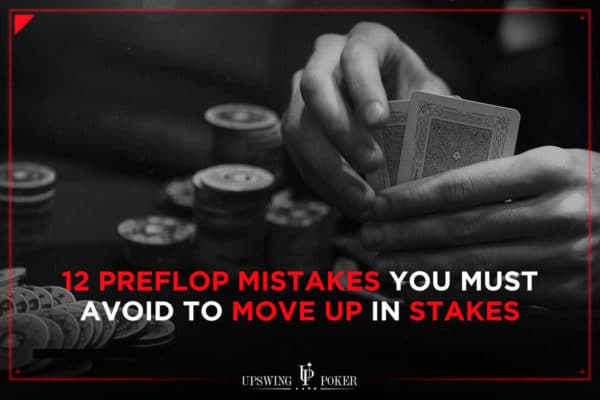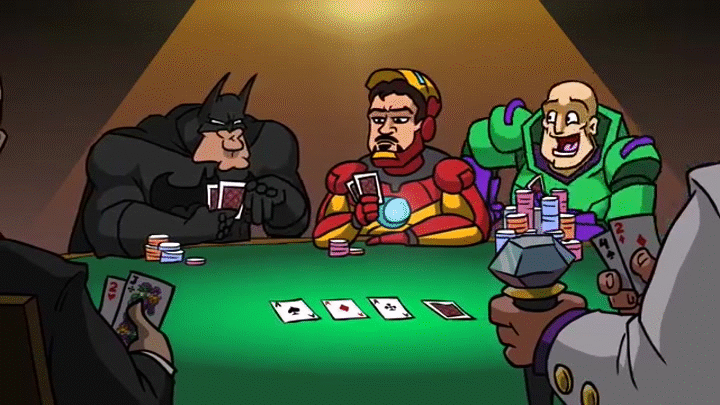Poker Moving Up Stakes 5,0/5 1891 votes

Moving up in stakes is a complex topic, and one I’m glad is a constant presence in poker forums. Everyone, from newcomers to old-school players, is a little curious about the process of moving from microstakes to small stakes, or from $2NL to $5NL.

If your goal is to continuously earn money while playing poker, you’re going to want to move up stakes at some point, since you can earn more money in a smaller amount of time. As you progress through higher and higher cash game limits, you’ll face increased competition in games that involve increasingly-higher amounts of money.
If you’re going to move up stakes successfully, you need to understand the process. This post is a guide to the why, when, and how of moving up stakes in online poker.
Tips When Moving Up When you play poker online at PokerStars it’s quite common to have a regular buy-in at tournaments or cash games that you always play. Whether it is $5 MTTs, $1/$2 cash games or $10 Spin & Go’s many players will stick pretty closely to the same stakes every time they open up. Moving up in stakes for a tournament or cash game player is often one of the most difficult things for a poker player. At higher stakes, you are faced with new, unfamiliar, opponents who are more skilled than the players at your previous stake. These two factors, unfamiliarity and skill, lead to a very challenging barrier to entry when moving. Moving up in stakes is a complex topic, and one I’m glad is a constant presence in poker forums. Everyone, from newcomers to old-school players, is a little curious about the process of moving from microstakes to small stakes, or from $2NL to $5NL.
A Bankroll Tip for Moving Up Stakes
Opinion is a little divided on this subject – in my opinion, as long as you have a bankroll that can sustain 20 buy-ins for the next stakes level up, your money is ready to move up. If you start with a bankroll worth 20 buy-ins of $5NL, and your goal is to build a bankroll worth 20 buy-ins of $10NL, all you need to do is double your money. By waiting until you have that $200 bankroll built up before you move up stakes, you’re protecting your bankroll for the inevitable bad streak.
But remember – just because your bankroll is big enough to handle a certain buy-in doesn’t mean you have to move up at that point. Think of this restriction as a floor rather than a ceiling. The more you grow your bankroll before your move, the more secure your money once you decide to make the move. Never be ashamed to move back down in stakes if an experiment in moving up goes wrong.
When to Move Up in Stakes
Here are some factors to consider once your bankroll is big enough to move, but before you actually make the move:
Am I winning?
You should be keeping track of every dollar you spend on poker, and be able to calculate how much you win vs. how much you lose for each poker session. The use of poker tracking software is a huge boon in this regard; looking at statistics will help you decide if you’re winning enough to consider a change in stakes.
Poker Moving Up Stakes Game
What’s my ROI?
Your ROI should be a positive number (and ideally at least a double-digit positive number) before you consider a change in stakes. Here’s how to figure your ROI – divide your profits by the gross amount you’ve spent on poker, with that number then multiplied by the total number of games played. The break-even point is 0%, so any number above 0 is a positive ROI. It’s a mistake to move up in stakes when you can’t even consistently make money at your current level.
Am I ready to move up?
This is a psychological/philosophical thing, and it’s difficult to quantify. The level you’re comfortable with psychologically is unlikely to change. You may be a billionaire who’s just uncomfortable with anything about $20NL – or you may be dead-broke and totally in the zone at $100 a hand. Only you can tell – so it’s important to be honest with yourself.
How to Move Up in Stakes


Once you’ve made up your mind that it’s time to move up in stakes, I know of two different methods for doing so. They both have something valuable to offer, so you can borrow from each of them to form your unique moving-up method.
The “Blended Games” Method
Think of this method like adding cold water to a hot bath to make it comfortable. Blending two different buy-ins into your sessions allows you to maintain some comfort while challenging your abilities just enough to eventually move stakes altogether.
I discovered this method while moving up from $3 SNG’s to $6 SNG’s. I started small, running just one table of each. As I got more comfortable with the method, I was running two $3 games and 2 $6 games. Eventually, I got to the point where I was playing all $6 SNG games. The change in stakes sneaked up on me and I made myself comfortable with the tougher competition by exposure.
The “Testing the Waters” Method
The other end of the spectrum is more like tossing a kid into a swimming pool to cure them of their fear.

As long as you have enough cash for the buy-in, you can play at any stakes level you want. Throw out all the rules I’ve established in this post – you don’t need a specific bankroll size, or a specific skill level. Heck, you don’t even have to be good. If you want to test the waters at stakes way beyond your means, go ahead and do it. The experience will be worth it.
Taking a quick stabs at the stakes level just above you won’t be so scary after you’ve seen the talent level four stake levels ahead. This is the best way to overcome any mental block against moving up – jumping in with both feet against the big boys and getting it over with.
What’s the downside to the testing the waters method? You’ll probably be playing at a huge disadvantage and get beat a lot. Most players in this situation tighten up or just start gambling and bluffing like crazy. But here’s the beautiful thing about this strategy – you can bail and head back to your original stakes level at any time.
Conclusion
High Stakes Poker Youtube
Moving up in stakes is about recognizing when it’s time to do so and implementing a strategy. When you’ve decided that you’re financially and mentally-prepared, you’ll want to test your skill before committing to a complete move.
The safest way to move up is to study a little bit every day and play an awful lot. As long as you’re checking your win rate and ROI along the way, and committed to moving back down if your move isn’t timed right, you’re doing it right. Remember that swings are a big part of the game. Changing stakes is a test of your psyche more than your skill set or bankroll.
4 Things Tony G. Has 100% Actually Said5 Steps to Picking the Perfect Poker TournamentHow to Find Profitable Video Poker OpportunitiesBitCoin Poker - Is It Really a Thing?
Poker Moving Up Stakes Odds
0 Comments